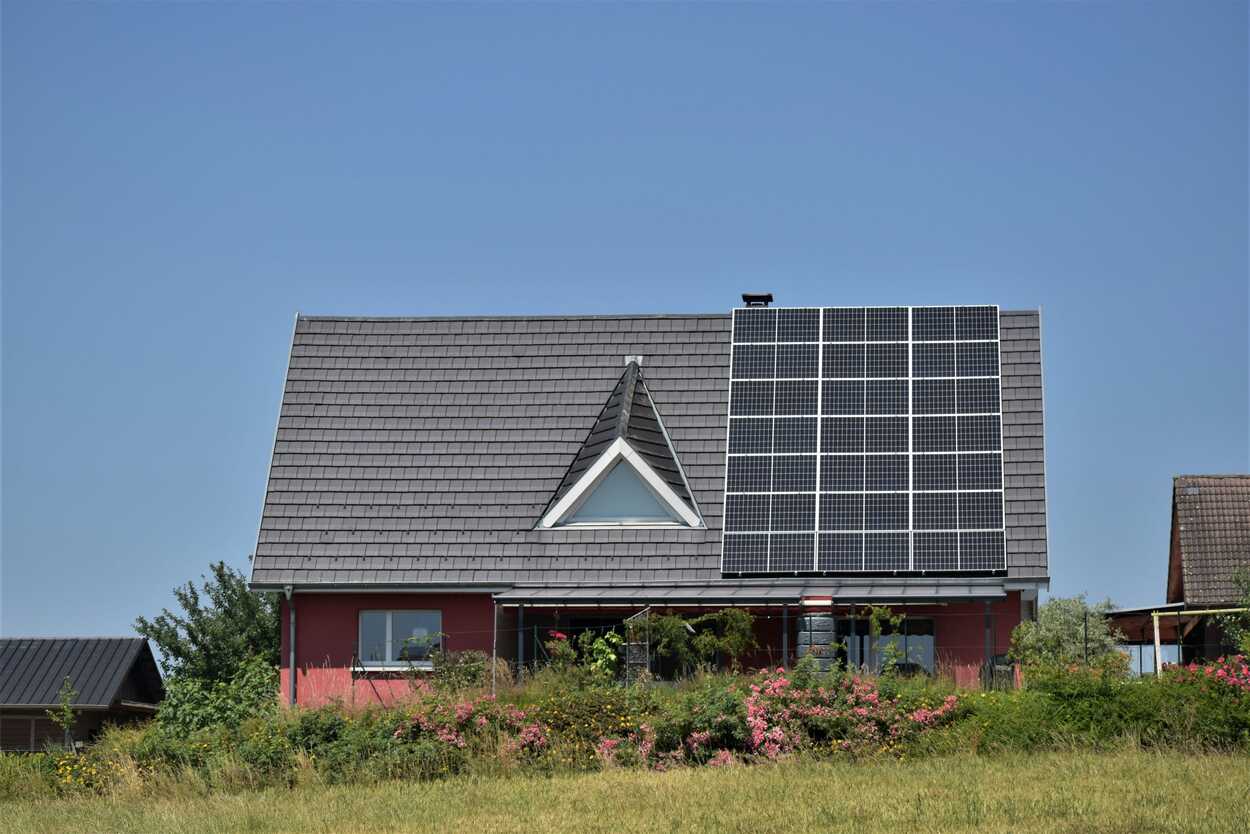Welcome to today’s blog post where we shall be exploring the transformative power of solar solutions for your Sydney bathroom. By harnessing the sun’s energy, you can realize impressive energy savings, significantly reduce carbon emissions, and contribute to a greener and cleaner environment. Sounds promising? Read more to uncover how you can achieve this.
Contents
- Solar Solutions for Sydney Bathrooms
- Benefits of Solar Powered Bathrooms
- Solar Water Heater Types
- Maintenance of Solar Bathroom Systems
- Cost-benefit Analysis of Solar Bathrooms
- Government Incentives for Solar Solutions
- Solar Panels for Bathroom Appliances
- Energy-efficient Bathroom Design Principles
- Sun Tunnels for Natural Light
- Installation Process of Solar Bathrooms
- Wrapping Up
- Frequently Asked Questions (FAQ)
Solar Solutions for Sydney Bathrooms
One of the most significant ways we consume energy in our homes is water heating. With advances in technology and an appreciation for efficient energy use, however, this is rapidly changing. Solar power is becoming a top choice for homeowners who are keen on sustainability and reducing their carbon footprint.
In contrast to traditional water heating methods, which rely on gas or electricity, solar-powered bathrooms leverage energy from the sun. Using solar panels installed on your roof, you can capture and convert sunlight into electricity.
Solar technology applicable to bathrooms extends beyond just water heating—with lighting and ventilation options also premiering in the market. Even better? There is an array of solar-powered gadgets designed to heighten your bathroom experience while saving on energy costs.
Utilising solar energy technology is not only environmentally friendly but also practical for residents in a sunny location like Sydney. As reported, Australia has one of the highest per capita rates of solar panel installation worldwide—with urban areas like Sydney leading in adoption rates.
Nevertheless, making such a transition requires guidance to understand the type of solar solutions available promptly—and that’s where call to a qualified plumber like Dan’s Plumbing would come in handy.
Benefits of Solar Powered Bathrooms
The advantages that come with transitioning to a solar-powered bathroom are numerous—ranging from cost savings, environmental conservation, to home value appreciation.
A striking benefit is marked as a significant reduction in your water heating bills—of about 50-90%. This is achieved by using solar water heaters, which can efficiently convert 60-70% of captured solar energy into heat. Consequently, this translates to a significant decrease in your household’s overall energy use—thereby contributing to efficient energy use.
Amplifying on its eco-friendliness, solar powered bathrooms significantly reduce a household’s carbon emissions—approximately 1.5 to 2 tonnes annually. As such, you play an essential role in combating greenhouse gas emissions and climate change.
Additionally, investing in solar solutions may increase your home value. With growing awareness and appreciation for sustainable living, houses with environmentally-friendly features—such as solar panels—are attractive to prospective buyers
Solar-powered bathrooms are not only about long-term benefits. They also guarantee immediate conveniences by ensuring hot water supply even during blackouts—a common problem with traditional electricity-dependent heating systems.
Solar Water Heater Types

Solar water heaters come in different types—each with its unique features and required maintenance procedures. Mainly, they include active and passive systems, further divided into various kinds based on how they operate.
Active systems rely on pumps and controls to circulate water or heating fluid in the system. They are either direct (open loop)—wherein water is directly heated within the solar collectors—or indirect (closed loop)—using a non-freezing liquid to transfer heat via a heat exchanger to the water.
Passive systems, on the other hand, depend on gravity and natural circulation of water when heated. Despite being less efficient than active systems, they are more reliable and have longer lives due to fewer moving parts. Moreover, some integrate well with radiant floor systems—a sustainable trend gaining traction in energy-efficient homes.
Another novel solution is hybrid hot water systems which combine heat pump technology, solar power and electricity to ensure efficient energy use and reliability. As explained in this detailed guide on hybrid hot water systems, the system harnesses solar power for heating during partly cloudy or clear days and uses a heat pump or electrical element during darker periods.
In summary, selecting the right type of solar water heater depends on factors such as your local climate, installation costs, safety issues, and local building code requirements—which are better explained by qualified plumbers like Dan’s Plumbing.
Maintenance of Solar Bathroom Systems
Regular maintenance is crucial in ensuring the longevity and efficiency of your solar bathroom system. It helps prevent costly repairs and maintain the system’s top performance.
Professional maintenance should be undertaken every 3-5 years by a solar contractor—like Dan’s Plumbing. This includes checking system components like solar panels, pumps, tanks and valves for any damages or leaks, assessing the system’s overall performance, and doing necessary repairs.
However, there are simple routine checks you can perform to keep your system in check. These include monitoring the system for any noticeable changes—such as discoloration of the water or unusual noises from the tank. Also, regular inspection of your roof for any soil build-up or tree shadows blocking your panels is helpful.
Maintenance requirements will depend on the type of solar water heater you’ve installed, local weather conditions, water quality and usage levels. Always consult with your local plumber for specific advice.
Remember: warranty conditions may require professional inspection by qualified plumbers like Dan’s Plumbing—so always ensure you comply with these requirements to keep your warranty effective.
Cost-benefit Analysis of Solar Bathrooms
While the upfront cost of installing a solar bathroom system can be relatively high, the long-term benefits and potential energy savings justify this initial investment. For instance, solar water heaters’ average payback period is around 5-10 years—meaning you recuperate your installation costs within that timeframe and continue making savings afterwards.
Australia’s government also supports homeowners through the Small-scale Renewable Energy Scheme, which offers financial incentives to install eligible small-scale installations. By issuing Small-scale Technology Certificates (STCs), this scheme can significantly reduce the upfront cost of your solar system.
The lifespan of solar panels (25-30 years) and solar thermal components (typically around 20 years) corresponds to extended periods of energy generation and cost savings. Therefore, while considering the initial cost, it’s essential to have in mind the lifetime value of these systems.
However, to ascertain whether transitioning to a solar bathroom is a wise investment for you, consider factors such as average sunlight levels in your area, local electricity rates, and possible future changes in energy prices. Also, factor in regular maintenance costs when doing your calculations.
Solar-energy technology continues to advance rapidly, hence reduced installation costs and increased efficiency—making it an investable venture. With skilled plumbers like Dan’s Plumbing available, you get quality advice and services for your solar-powered bathroom journey.
Government Incentives for Solar Solutions
Sydney residents are bestowed with a host of government incentives to adopt solar solutions, courtesy of the Australian Government’s Small-scale Renewable Energy Scheme (SRES). The SRES was initiated to offer financial relief through the issuance of Small-scale Technology Certificates (STCs). Having eligible small-scale installations entitles homeowners to STCs proportional to the amount of electricity their systems are designed to generate or displace.
STCs can either be sold directly in the market or assigned to an agent (like a solar installer) in return for a discount on your product. These financial incentives can significantly subdue the upfront costs of solar systems, making them a substantial solution for sustainable bathroom features.
Besides, more localized initiatives and rebates are sometimes available. For example, the City of Sydney has previously rolled out several sustainability programs targeting different sectors. It’s always prudent to consult with local authorities or trusted solar experts for current information on incentives or supports.
Solar Panels for Bathroom Appliances
The beauty about solar power is that its use isn’t confined to one specific application—monthly energy savings can extend beyond just water heating. With ingenuity and innovation becoming key hallmarks in technology, there’s a growing list of solar-powered bathroom appliances in the market today.
From solar-powered bathroom fans used to eliminate excess humidity and avoid window condensation, to solar LED lights—these alternatives spotlight how you can make every aspect of your Sydney bathroom truly green. As well as being eco-friendly, these gadgets harness renewable energy—meaning they run at virtually no cost once installed.
Each solar panel is designed to last approximately 25-30 years, offering an extended period of energy generation and cost savings. Nevertheless, it’s crucial to involve a solar contractor for appropriate guidance on the best-suited solar-powered appliances for your bathroom needs.
Energy-efficient Bathroom Design Principles
Beyond the direct application of solar power, there are several design principles homeowners can adopt to enhance energy efficiency in their bathrooms. Maximizing natural ventilation can help dissipate odours and serve as a cooling mechanism—thereby reducing reliance on mechanical fans or air conditioners.
Various technologically advanced materials are now available that enable excellent insulation properties—aiding in maintaining temperature levels in your home. The use of such materials can reduce the need for excessive heating or cooling, amplifying the overall energy savings.
More so, radiant floor systems — which work by using water heated by a solar heater — are growing in popularity due to their sustainability and ability to provide consistent warmth.
When incorporated alongside other solar solutions such as photovoltaic panels and solar water heaters, these measures will make your bathroom one of the greenest rooms in your house.
Sun Tunnels for Natural Light

Bearable bathroom lighting goes a way in perfecting your morning routines and creating an appealing atmosphere. Imagine achieving this without switching on a light bulb. Welcome to the world of sun tunnels.
Sun tunnels take advantage of natural sunlight; they capture daylight from the roof level and channel it down a reflective tube into your bathroom, providing abundant natural light that’s eco-friendly and cost-effective. Advanced versions can even adapt the level of light let in according to time—the strongest during peak hours and reducing intensities as the day darkens.
By utilizing sunlight in this ingenious way, sun tunnels significantly reduce the dependence on electrical light during the day, reducing your energy consumption and hence contributing to a scaled-down carbon footprint.
Installation Process of Solar Bathrooms
The installation process of a solar bathroom calls for a progressive and meticulous approach. It begins with sizing the right solar solution that will serve to meet your bathroom requirements effectively. This is followed by selecting an appropriate location for your solar panels—usually on the roof—to ensure maximum exposure to sunlight.
Your system connections are then set up in compliance with levied safety standards and building codes. After verifying the setup’s correctness and testing it to ensure proper working, you’ll be ready to start harnessing sun power for your Sydney bathroom.
The entire installation process needs professional handling to ascertain quality, safety, and efficiency in your system’s performance. Expertise abounds with skilled plumbers like Dan’s Plumbing who will guide you through each step of the process comprehensively.
Wrapping Up
Transforming a traditional bathroom into a solar-powered bathroom is an investment beneficial to not just Sydney residents but our planet as well. In tandem with government incentives and escalating technology advancements, adopting solar solutions becomes a realizable commitment towards living sustainably and cutting down on energy costs. Harnessing the power of the sun makes your bathroom not just environmentally responsible but cost-effective in the long run.
Frequently Asked Questions (FAQ)
1. How much can I save with a solar-powered bathroom?
Estimated savings vary between 50-90% on water heating bills, depending on the type of solar water heater used and the direct sunlight received in your location. Overall energy use is also significantly reduced, leading to substantial savings.
2. Are there financing options available?
Yes, the Australian Government offers a Small-scale Renewable Energy Scheme which provides financial incentives to reduce the upfront cost of eligible solar systems. There may also be other local or state incentives available.
3. How long does a solar water heating system last?
A solar water heating system can last typically around 20 years. However, its lifespan can be extended with regular maintenance and timely repairs.
4. Can I use solar energy for other bathroom appliances?
Yes, apart from water heating, there are solar-powered alternatives for bathroom fans, LED lights, ventilation and more.
5. Do solar panels require a lot of maintenance?
Solar panels need comparatively less maintenance. However, it’s advisable to have them checked by a professional every 3-5 years to ensure they’re working efficiently.
6. What happens to the solar water heating system during a blackout?
The beauty of solar solutions is they work independently of the grid. So, even during a power outage, your hot water supply remains uninterrupted.
7. Will the installation of a solar bathroom system increase the value of my home?
Yes, houses with solar panels and other sustainable features can be more attractive to prospective buyers, potentially increasing your home’s value.
8. How can I choose the right type of solar water heater for my home?
Choosing the right solar water heater depends on your local climate, safety issues, available sunlight, and local building code requirements. A qualified solar plumber can guide you through the process.
9. What is a sun tunnel and how does it work?
It is a tubular daylighting device. It captures daylight at the roof level and channels it down a reflective tube into a room, offering natural, eco-friendly light during the day.
10. What are the prerequisites for installing a solar bathroom system?
You need to have a location with maximum exposure to sunlight, usually on the roof. You also need to understand your local building codes and safety regulations. It’s advisable to involve a professional for installation.
- Clean & Green: Eco-Friendly Cleaning Tips for Your Plumbing Fixtures - October 8, 2024
- Classic to Contemporary: Choosing the Perfect Toilet Suite for your new Bathroom Design - September 19, 2024
- Chlorine Conundrum: The Benefits of a Water Filters in Your Sydney Bathroom - August 28, 2024
Related posts:
 Green Goals: How Eco-Friendly Plumbing Fixtures Are Taking Over Sydney Bathrooms
Green Goals: How Eco-Friendly Plumbing Fixtures Are Taking Over Sydney Bathrooms
 Smart Solutions: Hi-Tech Plumbing Fixtures to Ask Your Plumber About
Smart Solutions: Hi-Tech Plumbing Fixtures to Ask Your Plumber About
 Future-Proof Your Bathroom by Installing Eco-Friendly Plumbing Fixtures and Fittings
Future-Proof Your Bathroom by Installing Eco-Friendly Plumbing Fixtures and Fittings
 Storage Showdown: Finding the Best Organisational Solutions for a Modern Bathroom
Storage Showdown: Finding the Best Organisational Solutions for a Modern Bathroom
 Vintage Vibes: Retro-Inspired Vanities for a Touch of Nostalgia in Your Sydney Bathroom
Vintage Vibes: Retro-Inspired Vanities for a Touch of Nostalgia in Your Sydney Bathroom
 Water Works: Important Considerations when Choosing a Bathroom Mixer Tap
Water Works: Important Considerations when Choosing a Bathroom Mixer Tap



